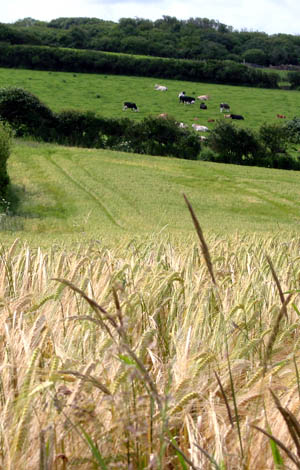When Biofuels Invade
 Countries should avoid planting crops for biofuels that stand a high risk of becoming invasive species, according to a report released today.
Countries should avoid planting crops for biofuels that stand a high risk of becoming invasive species, according to a report released today.
The Global Invasive Species Programme (GISP) has identified all the crops currently being used or considered for biofuel production and ranked them according to the risk they pose of becoming invasive species.
The report, Biofuel Crops and Non Native Species: Mitigating the risks of Invasion calls on countries to carry out risk assessments before they plant biofuel crops. It urges governments to use low-risk species of crops for biofuels and introduce new controls to manage invasive species.
"The dangers that invasive species pose to the world couldn’t be more serious," says Sarah Simons, Executive Director of GISP. "They are one of the top causes of global species loss, they can threaten livelihoods and human health, and they cost us billions in control and mitigation efforts. We simply cannot afford to stand by and do nothing in the face of this threat."
It is estimated that the damage from invasive species costs the world more than $1.4 trillion annually – five percent of the global economy. The US alone spends $120 billion annually on the control and impacts of more than 800 invasive species infestations.
The giant reed (Arundo donax), for example, is a proposed biofuel crop from West Asia which is already invasive in parts of North and Central America. Naturally flammable, it increases the likelihood of wildfires – a threat to both humans and native species in places such as California. In South Africa, the giant reed is considered a national problem as it drinks 2,000 liters of water per standing meter of growth, threatening water security for the nation’s growing human population.
Many of the plant species being considered for biofuels have the potential to become invasive if introduced to new areas, the report warns. Few governments have adequate systems in place to assess risks of invasion or contain them once they occur, and developing countries are the most vulnerable.
"Prevention is better than the cure," says Geoffrey Howard, IUCN’s Global Invasive Species Coordinator. "We need to stop invasions before they occur. The biofuel industry is a relatively new concept so we have a unique opportunity to act early and get ahead of the game – we mustn’t throw that away."
The African oil palm is another example of the havoc an invasive species can wreak. It is recommended for biodiesel and has already become invasive in parts of Brazil, turning areas of threatened forest from a rich mix of trees and plant life into a homogenous layer of palm leaves.
A meeting of the UN Convention on Biological Diversity currently being held in Bonn, Germany, represents the best opportunity in a decade to take global action against invasive species. GISP is calling on delegates to recognize the dangers invasive species cause and recommend risk assessments before biofuel crops are planted. It also calls on the scientific community to conduct more desperately-needed research into this topic.
For the full report please visit: http://www.gisp.org/